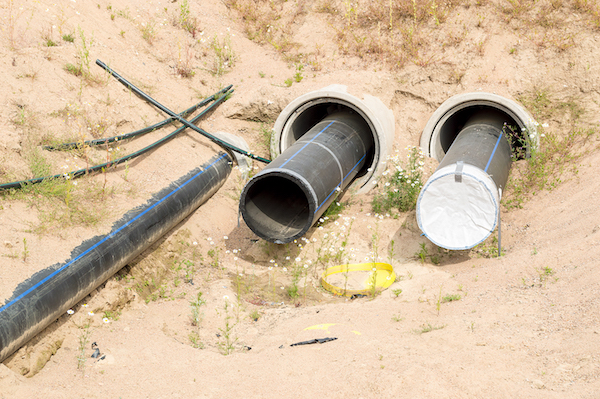There really is no getting around it. Your sewer line is subject to damage and corrosion. They will eventually crack or break because of common corrosion and other variables. However, that doesn’t mean that there is no way to keep them protected and reduce the amount of damage that can happen.
Here’s five ways to protect your sewer line from damage:
Know where your sewer line is located: Knowing where your sewer line is located is the first step to preventing any damage. It’s good to have a plot of your lines to avoid digging into them for any reason. Landscaping being the number one reason. You can visit the department of Public Utilities in Toledo to get a plot of your system. We also offer a service to scan your property with infra-red cameras to ensure the proper location of your sewer lines.
Make a barrier: One common cause of a cracked sewer line are tree roots. One of the most effective ways to keep those pesky tree roots out of your sewer pipes is to create a barrier between the trees and the sewer lines. There are different options available to you to create an effective barrier like slow-release chemical solutions designed for residential properties. These chemicals inhibit the growth of roots within the vicinity of the sewer line minimizing the possibility of tree roots finding their way into the pipes through cracks and breaks. You can also use wood and metal barriers by burying them about 6 inches to a foot deeper than your pipes and run them vertically along the sewer line to prevent the roots from going into the sewer pipes.
Sewer friendly trees: If you are building a new home, limiting the number of trees that you plant, along with maintaining a safe distance away from your sewer line will reduce the possibility of three roots encroaching your lines. You can also choose trees that have small root balls because they have slower growth. This is a wise preventative measure that adds almost nothing to your landscaping budget.
Excavation damage: There may be times that you need to excavate your property in order to complete a home remodel project. Digging up your yard may be necessary when altering your home’s landscape, repairing its foundation or expanding your living area with a home addition.
Running heavy machinery over the top of your main sewer line could place pressure on the soil covering this important pipe. The increase in pressure could cause a weak or aging pipe to collapse, leading to serious plumbing problems over time.
In order to prevent your main sewer line from sustaining damage during a dig, knowing the exact location will help avoid damages from any type of excavation.
Sediment damage: While the water that comes from your tap might appear clear, our local water supply contains trace amounts of suspended sediments. These sediments can include rust particles from old pipes, manganese, sand or calcium.
Although these suspended sediments are not harmful to your health, they can wreak havoc on your home’s plumbing system. As sediment-laden water drains through your main sewer line, some of the particles in the water can adhere to the interior surface of the pipe. Over time, these sediments build up until they eventually restrict the flow of water moving through the main sewer line. Water pressure then increases, placing undue stress on the pipe’s walls.
Sediment buildup can often lead to a burst main sewer line, which can be costly and inconvenient to fix.
If you think you may have damage to your sewer line, give us a call today, and one of the professionals at E & K Contractors will come out and do a full inspection. It’s always better to prevent a problem than to repair a broken sewer line.


I like the idea of having the trees panted further away from your house. I feel like it would be good to be able to avoid having the roots break pipes. Hopefully, they wouldn’t grow all the way over to the house, so I’ll make sure to do that if I plant trees.